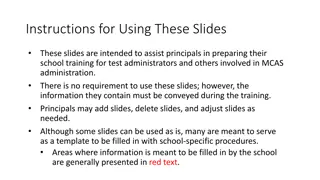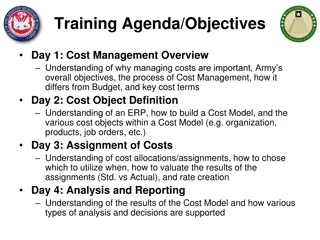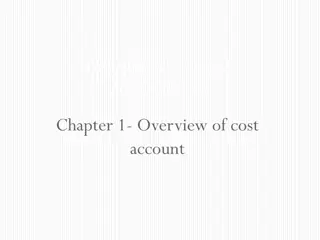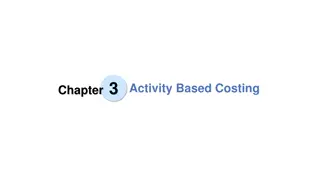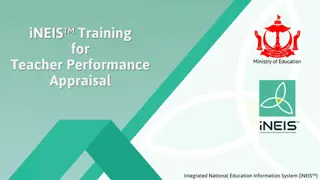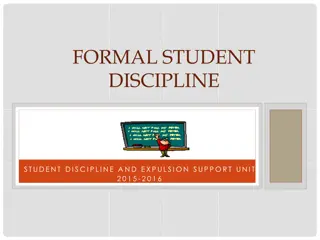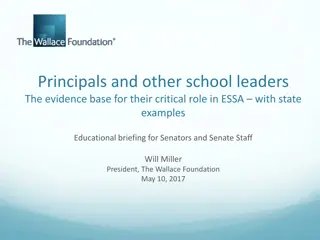Cost Principals
Cost principles are federal guidelines that determine allowable and unallowable costs on sponsored projects, distinguishing between direct and indirect costs. Examples of allowable and unallowable direct costs are provided, along with explanations of indirect costs and their examples.
Download Presentation

Please find below an Image/Link to download the presentation.
The content on the website is provided AS IS for your information and personal use only. It may not be sold, licensed, or shared on other websites without obtaining consent from the author.If you encounter any issues during the download, it is possible that the publisher has removed the file from their server.
You are allowed to download the files provided on this website for personal or commercial use, subject to the condition that they are used lawfully. All files are the property of their respective owners.
The content on the website is provided AS IS for your information and personal use only. It may not be sold, licensed, or shared on other websites without obtaining consent from the author.
E N D
Presentation Transcript
Cost Principals Procedures for Sponsored Projects https://www.csusm.edu/corp/sponsoredprojects/cost_principles_procedures.pdf
Definition Cost Principals are guidelines set by the federal government to determine: 1. if costs are allowable or unallowable on sponsored projects 2. if costs are considered direct or indirect costs Direct a cost specific to a sponsored project Indirect a common cost not specific to a sponsored project; expense is included in our negotiated F&A Rate.
Allowable Direct Costs The PI/PD and OSP SPA are both responsible to ensure all expenditures meet the criteria of an allowable direct cost: 1. Reasonable necessary to meet the objects of the project. 2. Allowable per award T&Cs, Federal, CSUSM Corp, OSP policies 3. Allocable benefit to project(s) can easily be identified. 4. Consistent cost is charged similarly to other OSP activities. 5. Available within the budget of the award.
Allowable Direct Costs - Examples 1. Salaries, wages, and fringe benefits for non-administrative personnel (Principal Investigators, Project Directors, co- investigators, research staff, etc.) 2. Consultants/Independent Contractors 3. Subcontracts/Subawards 4. Supplies, Materials, Equipment, Travel, Research Incentives
Unallowable Direct Costs A few examples of unallowable direct costs. 1. Assigning costs to a project: to spend down the balance. that are not identifiable to the project. before the cost is incurred. when it supports other activities (cost should be split) 2. Large equipment expenditures at the end of a project. 3. Increasing salary expenses when not consistent with actual effort expended.
Indirect Costs (IDC or F&A) Indirect costs are: 1. a Federally negotiated rate specific to CSUSM Corporation. 2. applied to the MTDC (modified total direct costs) of projects. 3. charged to to support costs not directly charged to a project. 4. not allowable as a direct charge to a project.
Indirect Costs: Examples 1. Salaries of administrative & clerical staff for activities such as: Accounting, Processing & tracking POs, issuing payments Grants and contracts administration 2. Office supplies: Copy paper, binder, business cards Postage for general use 3. Local Telephone costs and equipment 4. Rent and other Utilities 5. General use supplies/equipment: computers, laptops, software
Unallowable Costs Certain costs cannot be charged to a federally sponsored project either directly or indirectly: 1. Alcohol 2. Alumni activities 3. Contributions and donations 4. Fundraising 5. Lobbying 6. Selling and marketing activities
Roles & Responsibilities: PI/PD The PI/PD is responsible for: 1. Initiating and approving all expenditures 2. Ensuring costs are: Allowable, Allocable and Reasonable In accordance with the budget Compliant with sponsor T&Cs, Corp & Federal policies
Roles & Responsibilities: PI/PD: One-Up PI/PDs may not authorize or approve reimbursement of: Their own expenditure reimbursements Expenditures by/for a supervisor Expenditures made by a relative or spouse These expenses must be reviewed and approved by an individual upward in their chain of command.
Roles & Responsibilities: OSP SPAs 1. Review and approval of expenditures to ensure they are: Allowable, Allocable and Reasonable In accordance with the budget Compliant with sponsor T&Cs, Corp & Federal policies 2. Once approved, the assigned SPA will forward expenditure documents to Accounts Payable for payment processing or other department as appropriate.
Closeout Procedures Procedures for Sponsored Projects https://www.csusm.edu/corp/sponsoredprojects/updated_closeout_procedures.pdf
Definition Closeout means the process by which the awarding agency or pass-through entity determines that: 1. all applicable administrative actions have been completed 2. all required work of the award have been completed
Procedure Awards are to be closed within the award agreement timeframe: Usually no later than 90 calendar days after the end date of the award. Successful closeout preparation begins when the award is accepted. Regular monitoring of expenditures Identifying issues early and addressing promptly Submitting deliverables on time PI/PDs and OSP/SPAs have a shared responsibility in facilitating award management and monitoring internal controls during an award s lifecycle.
Roles & Responsibilities: PI/PD 1. Overall responsibility for programmatic objectives of the research. 2. Complying with sponsor s terms and regulations 3. Meeting all deliverables (reports, inventions, publications, patent, etc) 4. Communicating issues to OSP throughout the award 5. Perform regular reviews of expenditures and budget with assigned SPA: Discuss budget to actual variances Review allowability of expenses Ensure expenditures are fully represented (complete)
Roles & Responsibilities: OSP SPAs 1. Collaborate with PI/PD to meet financial terms and financial deliverables 2. Monitoring award expenditures for compliance 3. Cash management for awards interim & final invoicing letter of credit draws 4. Submitting interim and final financial reports 5. Closing out funds and/or projects in the system of record
Record Retention 1. The required time records are maintained after the project is closed. 2. Record Retention includes programmatic information & financial data. 3. The retention period is specific to each award: 3 years after the final financial report and/or invoice date Or per the sponsor s guideline requirements Records will be retained for whichever period is longer 4. All records are subject to audit
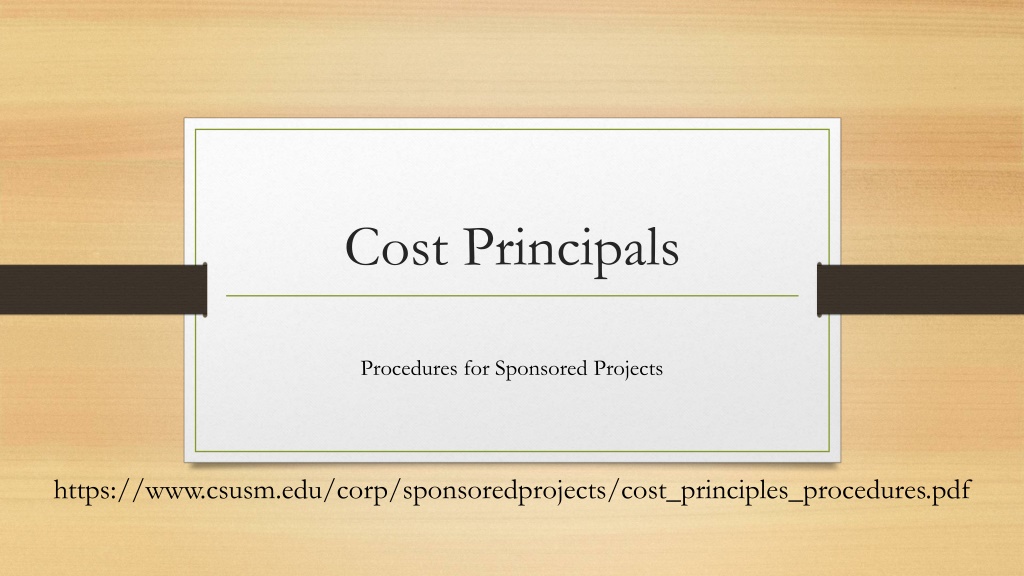
 undefined
undefined









